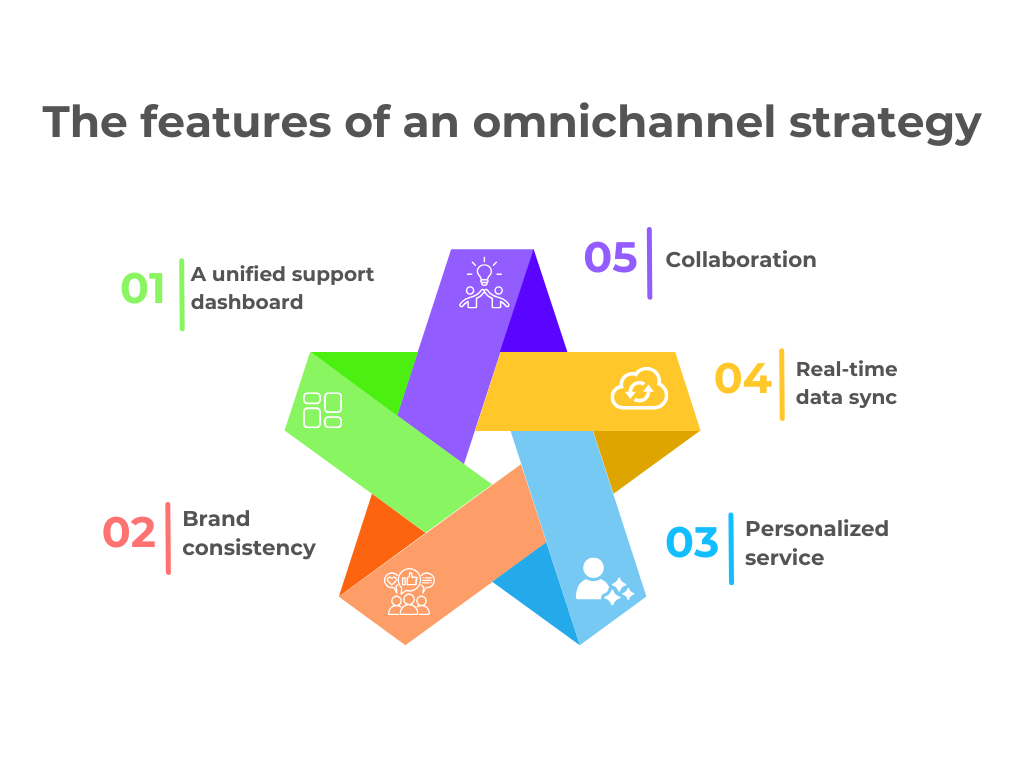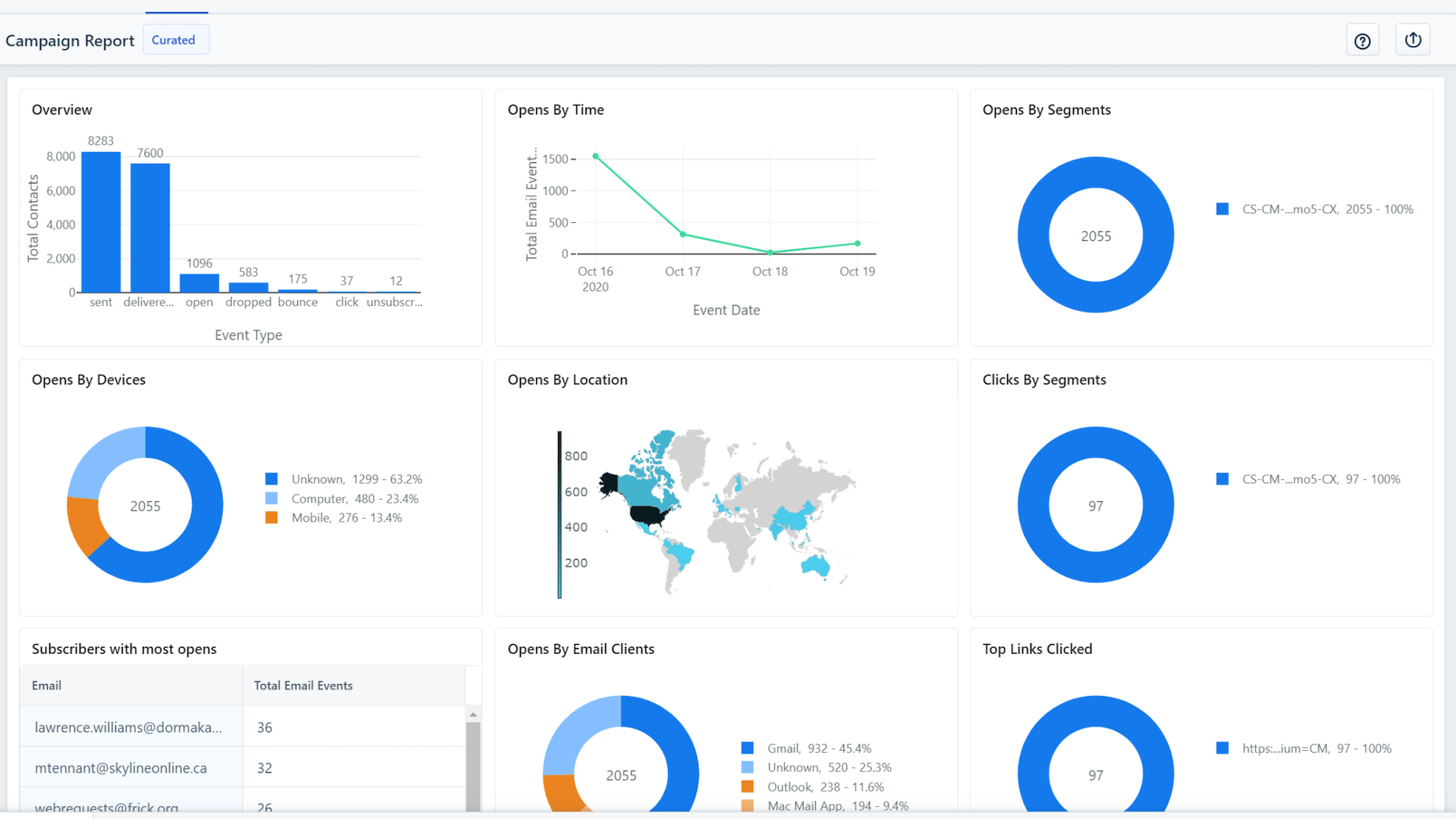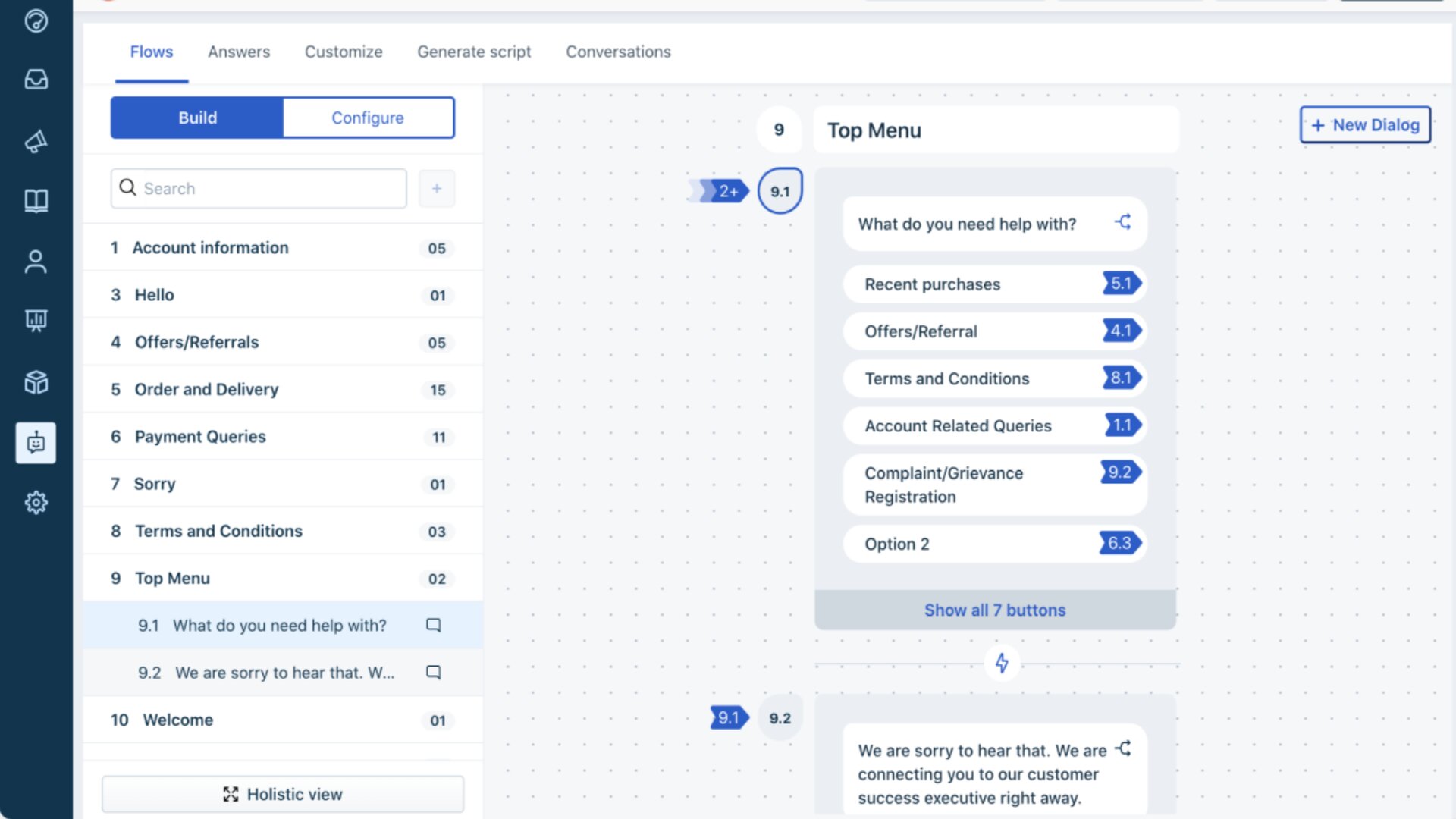Sponsored by Freshworks
What does omnichannel in customer service actually mean, and why is it so important
Learn more about how you can improve your customer journey

Omnichannel is a widely used term in the customer service industry. If you run a business with a support team, you’ve likely heard about an omnichannel strategy bestowing a competitive advantage. But this term is often misunderstood by businesses.
What does omnichannel actually mean, and why is it so important in business success? This guide will answer this question.
Sign up for a Freshworks 14-day free trial
Freshworks offers multichannel ticket management, team collaboration tools, and smart automation to resolve issues faster. The platform's Freddy AI assists agents by suggesting replies, auto-prioritizing tickets, and delivering instant insights. With an intuitive interface and robust reporting tools, Freshworks helps businesses deliver faster, more personalized support, ideal for scaling teams.
What is omnichannel?
An omnichannel strategy emphasizes delivering customer service across multiple channels, such as social media, live chat, email, telephone, web forms, and in-app messaging. The idea is to provide a seamless support experience despite juggling many channels.
The omnichannel strategy recognizes that customers can be found on different platforms, and it’s better to meet them where they are. It ensures your brand messaging and customer service quality remain consistent across different platforms.
The features of an omnichannel strategy
1. A unified support dashboard
Support agents interact directly with your customers and determine your company’s service quality. It isn’t ideal for them to juggle multiple platforms to communicate with customers.
For example, you don’t want an agent constantly switching through an email platform, social media account, and live chat app to interact with customers. Such an experience will likely leave them confused, less focused, and unable to deliver the best service.
Sign up to the TechRadar Pro newsletter to get all the top news, opinion, features and guidance your business needs to succeed!
Instead, you should choose customer support software that integrates multiple channels into a unified dashboard. This way, agents can monitor messages originating from social media, email, live chat, and other sources in the same place. They can view the complete history of customer interactions across different channels.
For example, a customer can contact a support agent via a live chat tool embedded in your website. Then, they can follow up via email. The support agent will be able to view the interactions across both live chat and email in a single dashboard. This way, they can easily understand any previous context and avoid asking the customer to repeat what they’ve previously said.

2. Brand consistency
Brand messaging is a core part of every business, especially those selling directly to individual consumers. It’s necessary to maintain a consistent brand voice and service quality when interacting with customers across different channels.
Remember that customers don’t differentiate between your brand, regardless of where they encounter it. A bad experience on one channel can discourage them from interacting on another channel.
An omnichannel strategy emphasizes consistent brand messaging. It’s easier for support agents to deliver consistent messaging when they interact with various channels from a single dashboard, rather than juggling different tools.
3. Personalized service
An omnichannel strategy enables your support team to offer personalized services to customers.
Customer support platforms aggregate data across different channels, giving agents a comprehensive view of customers’ preferences. They can use this data to offer personalized support, such as always addressing customers by their preferred name and language, rather than asking for this information repeatedly.
4. Real-time data sync
Real-time data sync is crucial to omnichannel customer service. Any action a customer takes on one channel is instantly reflected on other channels, enabling support agents to always stay informed about the customer’s issues.
Suppose you run an e-commerce store, and a customer initiates a live chat to complain about their delayed order, providing their unique order number. The support agent informs the customer that the issue will be rectified soon. Then, the next day, the customer sends a follow-up email, but their request is routed to a different agent.
Despite a different agent handling the issue via email, they can see the customer’s previous complaint and their order number – any of the customer’s actions are synced in real-time, regardless of the source. The agent doesn’t need to ask the customer to repeat the information they previously sent via live chat– the agent sees everything and handles the process smoothly.
Even if the customer contacts your company again via telephone, a new agent can view their data history and offer help based on previous complaints.
5. Collaboration
Omnichannel customer service fosters improved collaboration, particularly among support teams. All customer information is centralized and easily accessible, allowing any support agent to quickly pick up where their colleague left off. If needed, a support agent can promptly communicate with staff in a non-support department to rectify a customer’s issue.
Yet, it’s crucial to implement standard security protocols for agents dealing with sensitive customer data. Support platforms have access control features, allowing administrators to determine who can access specific data.
You should also establish clear data access policies and educate employees on organizational practices – they should know which data they’re allowed to access and under what conditions.
Why is an omnichannel strategy important?
1. It leads to improved customer experience
Delivering excellent customer service is the core purpose of implementing an omnichannel strategy. This strategy enables support agents to interact with staff warmly and resolve their issues quickly.
We provided a previous example of an omnichannel experience where a customer contacts a company via live chat and email. This example demonstrates how an omnichannel strategy leads to a smooth customer experience. The end result is improved customer satisfaction, which translates into a higher brand value.

2. It’s good for the bottom line
Omnichannel support leads to higher customer retention. People who enjoy personalized, effective support tend to stay with a brand longer. They’ll be more willing to buy products, knowing that your support team has them covered if problems arise.
The goal of every business is to improve the bottom line even when facing tough competition. Omnichannel support provides a competitive edge that you latch onto for greater business growth.
3. It provides customer insights
Omnichannel support platforms let you aggregate customer data from multiple sources and display it in a centralized, interactive dashboard. This unified dashboard makes it easy for support agents to find insights that’ll help them resolve issues quickly.
Apart from resolving support inquiries, you can also use the data to create effective marketing campaigns. For instance, you can use insights about a customer’s previous purchases to recommend new products they can purchase. You can use their location data to send email campaigns promoting local events.
Personalized marketing, based on customer data, makes your campaigns much more effective. You’ll spend less yet achieve more conversions when you run personalized campaigns, helped by the insights from your customer support tool.

How to implement omnichannel customer support
1. Map out your customer journey
The first step in omnichannel support is mapping out your customer’s journey, starting with where they first encounter your product, how they purchase it, and all the way through to post-purchase support.
Suppose you run an online bookstore. The journey begins in the awareness stage, when a lead discovers a new book via social media, search engines, a blog post, or a book review. The next phase is consideration, where the lead visits your website to find the book and explore other available options.
After consideration comes purchase, wherein the lead adds the book to their cart and pays for it– this phase makes them an official customer. Then, the journey enters the post-purchase phase, where the customer may seek help with their order or need guidance on buying more books.
The point of mapping out the customer journey is to identify the key touchpoints where your business interacts with customers. Then, you’ll ensure these areas work very efficiently. Customer support isn’t just about resolving complaints – you need to minimize the complaint rate by delivering efficient service beforehand.
2. Identify your customer communication channels
Businesses utilize various customer communication channels, including email, social media, in-app messaging, telephone, and more. However, they often focus on specific channels over others. For example, some businesses don’t offer telephone support. Some provide telephone support, but not live chat.
Every company’s case is unique, so you need to identify the channels you mainly use to interact with customers. Scrutinize each channel and evaluate its strengths and weaknesses in your customer support system.
You could observe that customers communicate more through live chat than other channels. Alternatively, you could observe that customers communicate more through social media than via email, or vice versa. These are signals to pay more attention to the channels that customers prefer, while also promoting cross-channel communication.
3. Choose an omnichannel customer support platform
You need to choose a software with excellent omnichannel support features. Your chosen software determines how effectively you’ll implement the omnichannel strategy, so this decision requires careful thought.
Popular support tools like Zendesk and Freshdesk Omni have sophisticated omnichannel features. Lately, they’ve integrated artificial intelligence (AI) to help companies deliver enhanced support experiences, for instance, by using chatbots to handle mundane requests.

Research thoroughly when selecting a support platform. Confirm the pricing structure to ensure it aligns with your budget. You can find tools in all price ranges, from affordable solutions priced monthly or annually per support agent to custom-built tools designed for large companies with big budgets.
Scalability is another critical factor to consider. You need a platform that can easily handle more requests as your business grows. Adding new accounts for support agents should be a straightforward process.
Ironically, consider the support reliability of your support software provider. You may need help at any time, so you should be able to contact the company via live chat, email, telephone, and other channels.
4. Integrate your systems
With your support software set up, you should integrate it with other tools that power your business operations.
We’ve given multiple examples of running an e-commerce business. In such cases, you can integrate your support software with your e-commerce platform for seamless data transfer. For instance, if a customer asks about a delayed order, agents can run a quick scan – using their order number – without leaving the support software’s interface.
Another example is integrating your support platform with third-party analytics tools. These third-party tools can analyze the data collected by your support tool and display key metrics, such as the ticket resolution rate, average ticket resolution time, and average customer satisfaction score.
Likewise, you can integrate artificial intelligence (AI) tools into your customer support workflow. AI can perform key tasks, including routing incoming requests to the appropriate agent, using chatbots to solve simple issues, and recommending the most suitable responses for your support agents.
5. Create a knowledge base
A Knowledge Base is a critical part of your omnichannel support strategy. It’s a hub of resources, including user guides, tutorials, and answers to frequently asked questions (FAQs), which help users solve problems independently.
A knowledge base is accessible through all communication channels. You can direct customers from social media, email, live chat on other platforms to your knowledge base to resolve simple issues. This strategy frees up time for your support team to dedicate their efforts to the more challenging problems.
We mentioned that effective support isn’t just about solving problems quickly but also about reducing the rate of complaints that your team receives. A detailed knowledge base goes a long way in reducing the volume of complaints your support agents handle.
6. Train your support team
A support team can only implement an effective omnichannel strategy if they have the required knowledge. Thus, you should provide adequate training to support agents, helping them understand the importance of an omnichannel strategy, how it makes their work more efficient, and the best practices to implement it.
Your support agents should understand the customer journey and how to deliver consistent messaging across different channels. Most importantly, they should know how to navigate your support tool without hassle.
In some cases, you can seek external help to train your staff on omnichannel marketing– companies with big budgets often take this route. Otherwise, you can rely on your in-house IT team to train agents on working with your support platform.
7. Monitor & evaluate
An omnichannel strategy is a continuous process, not a one-time effort. It requires constantly analyzing your implementation and identifying areas for improvement.
For example, you may observe lower ticket resolution rates or higher average ticket resolution times. It’s a hint of something wrong in the customer support workflow that needs immediate rectification.
Always strive to improve on key support metrics, even if you’re already at a good level. “Kaizen,” the theory of continuous improvement, should be your support team’s mantra.
Stefan has always been a lover of tech. He graduated with an MSc in geological engineering but soon discovered he had a knack for writing instead. So he decided to combine his newfound and life-long passions to become a technology writer. As a freelance content writer, Stefan can break down complex technological topics, making them easily digestible for the lay audience.

